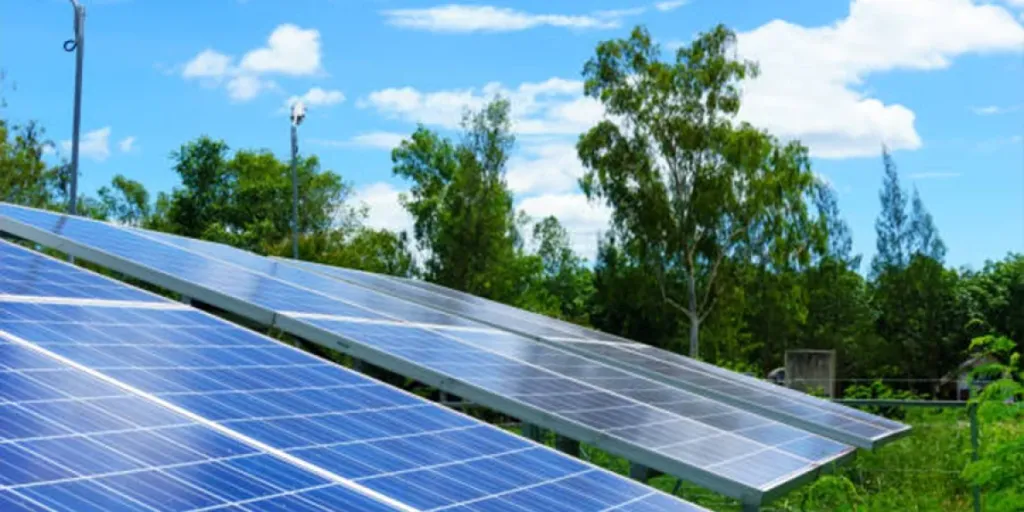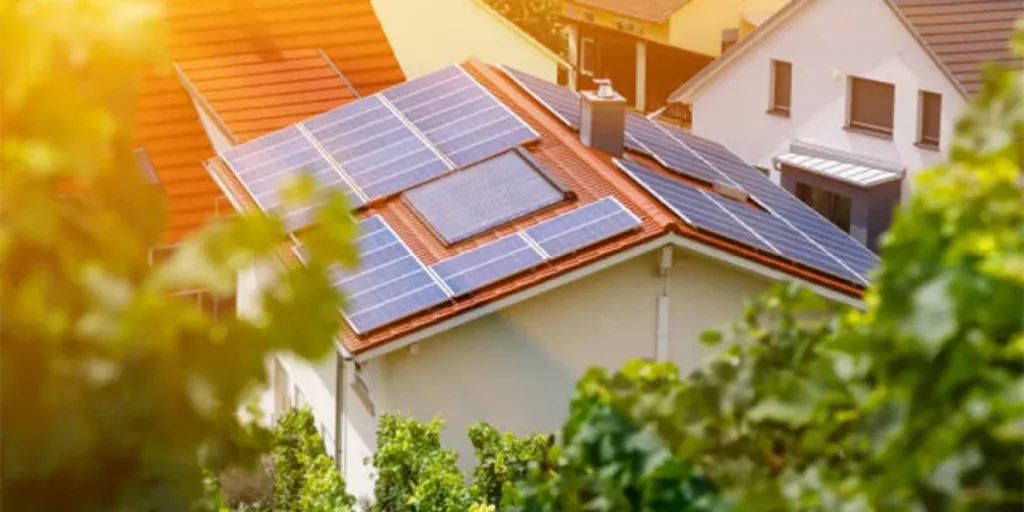With the rapid development of science and technology and the transformation of the global energy structure, renewable energy has become key to future energy development. Lithium-ion batteries, as secondary battery sources, have developed rapidly since the 1990s. Their advantages of high energy density, long cycle life, and environmental friendliness have seen them become widely used in new energy vehicles, electronic products, and energy storage systems. In addition, lithium-ion batteries have gradually become an important research tool in the renewable energy industry, helping to fuel the rise in home energy storage systems. The establishment of these types of system has improved the stability of power systems as well as saved costs.
Here, we’ll further delve into the upsides and downsides of using lithium-ion batteries for residential energy storage, including battery performance, cost, safety, and environmental impact.
Table of Contents
Lithium-ion battery structure
Lithium-ion battery development for home storage
Problems with household lithium-ion batteries
Ongoing research of lithium-ion batteries
Domestic lithium-ion battery market prospects
Incentives for homeowners to use lithium-ion batteries
Some tips on buying batteries
Lithium-ion battery structure
A lithium-ion battery is a type of secondary battery (rechargeable battery) that primarily relies on lithium ions moving between the positive and negative electrodes. Lithium-ion batteries are generally composed of cells, a fuse (or PTC), protection boards, shells, and some accessories. The protection board is mainly composed of protection chips, MOS tubes, resistors, capacitors, and PCB boards. The cell, meanwhile, refers to a single electrochemical cell containing positive and negative electrodes, electrolytes, a diaphragm, and so on. The active substances used to create positive electrodes are generally lithium manganate, lithium cobalt, lithium nickel cobalt manganate, or lithium iron phosphate. Graphite, or carbon with a similar graphite structure, is used for the negative electrodes. The organic electrolyte is a carbonate solvent dissolved in lithium hexafluorophosphate; polymer lithium-ion batteries use a gel-like electrolyte.
Electric bicycles commonly use lithium nickel cobalt manganate (also known as ternary) plus a small amount of lithium manganate. The diaphragm is a shaped polymer film with a microporous structure that allows lithium ions to pass freely but blocks electrons. Common varieties are made out of polyethylene (PE), polypropylene (PP), or its composite film, PP/PE/PP three-layer diaphragm. The battery shell is usually made up of a steel shell, aluminum shell, nickel-plated iron shell, aluminum-plastic film, etc., while the cap features the battery’s positive and negative terminals.
Lithium-ion battery development for home storage
Product technology
In recent years, with the gradual development and maturity of lithium-ion battery technology, domestic lithium-ion batteries have made significant technical progress in terms of capacity, safety, cycle life, and so on. At present, the energy density of mainstream household lithium-ion batteries is 200-300Wh/kg, and some high-end products even exceed 350Wh/kg. In addition, the continuous upgrading of battery management system (BMS) technology means that the safety of lithium-ion batteries is also improving.
Market scale
In recent years, the size of the lithium-ion battery market has been showing a rapid expansion trend, with the global household lithium-ion battery market growing from US $1 billion in 2010 to US $10 billion in 2020. At present, the lithium-ion battery market is mainly concentrated in China, Japan, and South Korea, according to relevant reports, with the Asia-Pacific region accounting for more than 70% of the global market share. Meanwhile, the European region only accounts for 10-15% of the global market, which shows that the European market has great development potential.
Cost reduction
The reduction of the cost of lithium-ion batteries involves many aspects, and manufacturers continue to improve battery performance and reduce battery costs by means of technology, material improvement, and production optimization. In the future, with deepening research and a maturing of the technology, the production cost of lithium-ion batteries will also further reduce.
Problems with household lithium-ion batteries
Cost
With the continuing maturity of lithium-ion battery technology, production costs have been declining year on year. But due to the uneven distribution of raw materials, price fluctuations can be significant, making the cost of lithium-ion batteries higher than that of traditional batteries, which restricts its competitiveness in large-scale applications.
Durability
The life of lithium-ion batteries is determined by the number of cycles, charge and discharge rate, temperature, and other factors. As the number of battery cycles increases, a battery’s capacity and power output may decrease.
Environmental issues
While lithium-ion batteries for household use provide many conveniences, they also come with certain environmental problems. And although many lithium-ion battery manufacturers have adopted green production processes, there is still a certain environmental risk in the treatment of waste lithium-ion batteries. For example, waste batteries contain harmful heavy metals, which if not handled properly, can possibly cause contamination of soil, water sources, and ecosystems.
Safety hazards
Lithium-ion batteries that undergo excessive charges and discharges, high temperatures, extrusion, and other special conditions, may experience thermal runaway, fire, and other safety accidents. Despite continuous improvements in battery management system (BMS) technology, the safety of lithium-ion batteries has been greatly improved; but in extreme cases, there is still the possibility of safety accidents.
Ongoing research of lithium-ion batteries
As an efficient and relatively environmentally friendly energy storage device, lithium-ion batteries have received extensive attention and research in recent years. Current research is mainly directed toward optimizing materials, structure, battery management, fast charging technology, safety, and other aspects.
Material innovation
Researchers have been exploring new positive and negative electrode materials to improve the energy density, life, and safety of batteries. For example, silicon materials may soon replace traditional graphite for negative electrodes, thereby improving the energy density of batteries. At the same time, researchers are also exploring new cathode materials, such as lithium-rich materials and layered lithium-rich materials, to improve the energy density and life of batteries.
Solid electrolytes
Solid electrolytes are one of the key technologies in next-generation batteries. Compared to the liquid electrolytes used in traditional lithium-ion batteries, solid electrolytes have higher safety and higher energy density. At present, researchers are studying the development of low-cost, high-ionic conductivity solid electrolytes to replace traditional liquid electrolytes.
Battery management systems
The battery management system is an important component in the energy utilization rate of lithium-ion batteries, extending battery life and improving safety. Researchers are working on more intelligent battery management systems to achieve accurate control and the optimal management of batteries.
Fast charging technologies
Fast charging technology can shorten a battery’s charging time and improve use efficiency. Researchers are studying more efficient charging technologies, such as pulse charging and wireless charging, to achieve faster charging speeds and higher charging efficiency.
Domestic lithium-ion battery market prospects
Energy transformation needs: With the advancement of global energy transformation, renewable energy sources such as solar energy and wind energy have gradually become mainstream. Domestic lithium-ion batteries help store these intermittent energy sources, enabling households to achieve a self-sufficient energy supply and reduce their dependence on traditional fossil energy sources.
Popularity of electric vehicles: With the rapid development of the electric vehicle market, the household lithium-ion battery energy storage system can be adapted to be used as a supporting facility for electric vehicles, providing energy storage solutions and further improving their range and performance.
Peak-valley electricity price policy: Many countries and regions implement peak-valley electricity price policies to encourage users to charge at low prices and use electricity during peak hours. Home lithium-ion batteries can help users take full advantage of peak-valley electricity pricing policies to reduce energy costs.
Carbon neutrality goal promotion: Countries around the world have proposed carbon neutrality goals to promote energy structure adjustment and reduce carbon emissions. Household lithium-ion battery energy storage systems can improve energy efficiency, reduce carbon emissions, and help the world achieve carbon neutrality.
Technological innovation: With continuous progress in lithium-ion battery technology development, their capacity, safety, cycle life, and other aspects of performance will be further improved, reduce costs, and improve market competitiveness.
Incentives for homeowners to use lithium-ion batteries
Japan
Japan’s Ministry of Economy, Trade and Industry (METI), with a budget of about US $98.3 million, provides 66% subsidies for households and businesses that install lithium electronic batteries. Taking sodium sulfur batteries as an example, the Japanese government not only gives free financial support in the early research and development, providing more than 50% of funds, but also provides support including technology, market, demonstration projects, and other aspects, and continues to give subsidies after its commercial operation.
United States
Federal tax credits: The U.S. government offers a range of tax credits to promote the development of renewable energy and storage systems. For example, the Investment Tax Credit (ITC) and Production Tax Credit (PTC) can be used to reduce the acquisition cost of a home energy storage system. Meanwhile, some states offer substantial incentives and subsidies to attract investment in battery production, including cash incentives, tax incentives, and land use rights. Some states also lower electricity bills by implementing “net metering” policies that allow home energy storage owners to sell excess solar power back into the grid.
Germany
Between 2013 and 2018, the German government provided up to 30% direct loan subsidies for household energy storage, and because energy use is mainly related to household photovoltaics, Germany’s beneficial household photovoltaic policies have promoted household energy storage installations.
Some tips on buying batteries
Understand the chemical composition
Lithium-ion batteries are usually composed of metal elements such as lithium, cobalt, and nickel. Understanding the source and extraction process of these elements is important for assessing a battery’s environmental impact. Buyers can ask suppliers to provide information on battery materials, and try to choose products from sustainable sources that use environmentally friendly extraction processes. In addition, buyers should look for brands that have been certified for environmental protection, such as the European Union’s RoHS certification and China’s new energy vehicle power battery traceability management platform certification.
Consider the capacity and energy density
Buyers must understand the capacity and energy density of the battery in order to select the right battery for their application needs. In general, batteries with high capacities and energy density can provide longer battery life and are lighter-weight. However, buyers should also consider factors such as charging time and lifespan.
Pay attention to battery safety
Lithium-ion batteries can cause safety incidents when improperly used or handled. Therefore, buyers should choose a battery brand that has a good safety record and has been rigorously tested. During transportation and storage, the purchaser should also follow the relevant safety regulations and standards.
Consider charging speed
The charging speed of lithium-ion batteries is also a factor to consider. Fast-charging technology can shorten a battery’s charging time and improve efficiency, but may also have an impact on battery life and safety. The purchaser should choose the appropriate charging speed according to the actual demand.
Consider the cycle life
The cycle life of a lithium-ion battery refers to the number of times it can be used under certain charging and discharging conditions. A battery with a long cycle life can provide a longer service life, which reduces the frequency of replacement and waste generation. Buyers can choose batteries with long cycle life according to the actual application needs.
For more trade solutions, industry overviews, and fresh perspectives on business ideas, make sure to subscribe to Alibaba.com Reads.




